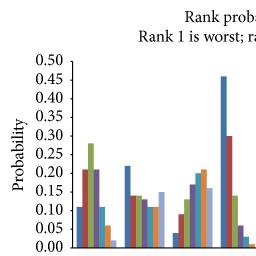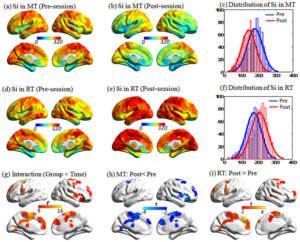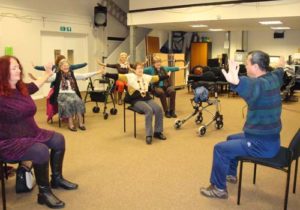
Improve Exercise Capacity in Heart Disease with Mindfulness
By John M. de Castro, Ph.D.
“Why bother to do a mindfulness practice in addition to regular workouts?” You know that exercise can clear your head and turn around a bad mood. But when you add mindfulness in to the mix, you add rocket fuel to these already valuable benefits.” – Belief net
Cardiovascular disease is the number one killer, claiming more lives than all forms of cancer combined. “Heart disease is the leading cause of death for both men and women. About 610,000 people die of heart disease in the United States every year–that’s 1 in every 4 deaths. Every year about 735,000 Americans have a heart attack.” – Centers for Disease Control. A myriad of treatments has been developed for heart disease including a variety of surgical procedures and medications. But, these treatments can be costly, invasive, have major side effects, and often don’t address the root causes of the disease. On the other hand, the safest effective treatments for heart disease are lifestyle changes.
It has been demonstrated that lifestyle is a major contributor to the development of heart disease. quitting smoking, weight reduction, improved diet, physical activity, and reducing stresses have shown to be effective in treating heart disease. Contemplative practices such as meditation, tai chi, and yoga, have also been shown to be helpful for heart health have also been shown to be safe and effective treatments. In addition, mindfulness practices have also been shown to be helpful for producing the kinds of lifestyle changes needed such as smoking cessation, weight reduction, and stress reduction.
One problem with the employment of mindfulness treatment programs to treat disease is that they require patients to meet frequently with professional therapists in either individual or group settings. This can be inconvenient, costly, and time consuming and for many people who live in remote areas, unavailable. So, to overcome these problems, mindfulness based techniques have been successfully developed and delivered over the internet. In a study by Younge et al. it was demonstrated that a 12-week mindfulness intervention significantly improved exercise capacity and decreased heart rate and blood pressure. The study, however, did not include a long-term follow-up. So, it is unknown how long-lasting the effects of the mindfulness treatment may be. In today’s Research News article “Online mindfulness as a promising method to improve exercise capacity in heart disease: 12-month follow-up of a randomized controlled trial.” See summary below or view the full text of the study at: https://www.ncbi.nlm.nih.gov/pmc/articles/PMC5423609/, Gotink and colleagues perform a 12-month follow-up of the patients included in the study by Younge et al.
They recruited adult patients with existing, diagnosed heart disease and randomly assigned to a 12-week on-line mindfulness training or a usual medical care condition. The mindfulness training program included different meditations, self-reflection, yoga, and practical assignments and suggestions for using mindfulness in day-to-day life. After completion of the program the participants continued to receive biweekly reminders to continue practice. The patients were measured before and after training and 9-months later for exercise capacity measured with the 6-minute walk test, blood pressure, heart rate, respiratory rate, and cortisol levels, mental and physical functioning, anxiety and depression, perceived stress, and social support.
They found that similar to the benefits of mindfulness training documented at the end of training, 9-months later there were still small but significant improvements in the mindfulness group in exercise capacity, systolic blood pressure, mental functioning, and depression. These results are important in that they demonstrate that on-line mindfulness training can have lasting benefits for patients with heart disease. On-line training is inexpensive, convenient, and available to everyone with internet connections. It is effective for producing long-term improvements in exercise capacity in patients with heart disease allowing the patients to safely engage in beneficial exercise programs to strengthen the cardiovascular system. In addition, mindfulness training has been shown to help with producing other lifestyle changes that are beneficial for heart disease, Hence, it would be reasonable to suggest that on-line mindfulness training should be incorporated into standard heart disease treatment programs.
So, improve exercise capacity in heart disease with mindfulness.
“There are well documented studies that show meditation reverses the physiologic manifestations of stress such as elevated blood pressure and heart rate.” – Joon Lee
CMCS – Center for Mindfulness and Contemplative Studies
This and other Contemplative Studies posts are
Improve Exercise Capacity in Heart Disease with Mindfulness
By John M. de Castro, Ph.D.
“Why bother to do a mindfulness practice in addition to regular workouts?” You know that exercise can clear your head and turn around a bad mood. But when you add mindfulness in to the mix, you add rocket fuel to these already valuable benefits.” – Belief net
Cardiovascular disease is the number one killer, claiming more lives than all forms of cancer combined. “Heart disease is the leading cause of death for both men and women. About 610,000 people die of heart disease in the United States every year–that’s 1 in every 4 deaths. Every year about 735,000 Americans have a heart attack.” – Centers for Disease Control. A myriad of treatments has been developed for heart disease including a variety of surgical procedures and medications. But, these treatments can be costly, invasive, have major side effects, and often don’t address the root causes of the disease. On the other hand, the safest effective treatments for heart disease are lifestyle changes.
It has been demonstrated that lifestyle is a major contributor to the development of heart disease. quitting smoking, weight reduction, improved diet, physical activity, and reducing stresses have shown to be effective in treating heart disease. Contemplative practices such as meditation, tai chi, and yoga, have also been shown to be helpful for heart health have also been shown to be safe and effective treatments. In addition, mindfulness practices have also been shown to be helpful for producing the kinds of lifestyle changes needed such as smoking cessation, weight reduction, and stress reduction.
One problem with the employment of mindfulness treatment programs to treat disease is that they require patients to meet frequently with professional therapists in either individual or group settings. This can be inconvenient, costly, and time consuming and for many people who live in remote areas, unavailable. So, to overcome these problems, mindfulness based techniques have been successfully developed and delivered over the internet. In a study by Younge et al. it was demonstrated that a 12-week mindfulness intervention significantly improved exercise capacity and decreased heart rate and blood pressure. The study, however, did not include a long-term follow-up. So, it is unknown how long-lasting the effects of the mindfulness treatment may be. In today’s Research News article “Online mindfulness as a promising method to improve exercise capacity in heart disease: 12-month follow-up of a randomized controlled trial.” See summary below or view the full text of the study at: https://www.ncbi.nlm.nih.gov/pmc/articles/PMC5423609/, Gotink and colleagues perform a 12-month follow-up of the patients included in the study by Younge et al.
They recruited adult patients with existing, diagnosed heart disease and randomly assigned to a 12-week on-line mindfulness training or a usual medical care condition. The mindfulness training program included different meditations, self-reflection, yoga, and practical assignments and suggestions for using mindfulness in day-to-day life. After completion of the program the participants continued to receive biweekly reminders to continue practice. The patients were measured before and after training and 9-months later for exercise capacity measured with the 6-minute walk test, blood pressure, heart rate, respiratory rate, and cortisol levels, mental and physical functioning, anxiety and depression, perceived stress, and social support.
They found that similar to the benefits of mindfulness training documented at the end of training, 9-months later there were still small but significant improvements in the mindfulness group in exercise capacity, systolic blood pressure, mental functioning, and depression. These results are important in that they demonstrate that on-line mindfulness training can have lasting benefits for patients with heart disease. On-line training is inexpensive, convenient, and available to everyone with internet connections. It is effective for producing long-term improvements in exercise capacity in patients with heart disease allowing the patients to safely engage in beneficial exercise programs to strengthen the cardiovascular system. In addition, mindfulness training has been shown to help with producing other lifestyle changes that are beneficial for heart disease, Hence, it would be reasonable to suggest that on-line mindfulness training should be incorporated into standard heart disease treatment programs.
So, improve exercise capacity in heart disease with mindfulness.
“There are well documented studies that show meditation reverses the physiologic manifestations of stress such as elevated blood pressure and heart rate.” – Joon Lee
CMCS – Center for Mindfulness and Contemplative Studies
This and other Contemplative Studies posts are also available on Google+ https://plus.google.com/106784388191201299496/posts and on Twitter @MindfulResearch
Study Summary
Gotink, R. A., Younge, J. O., Wery, M. F., Utens, E. M. W. J., Michels, M., Rizopoulos, D., … Hunink, M. M. G. (2017). Online mindfulness as a promising method to improve exercise capacity in heart disease: 12-month follow-up of a randomized controlled trial. PLoS ONE, 12(5), e0175923. http://doi.org/10.1371/journal.pone.0175923
Abstract
There is increasing evidence that mindfulness can reduce stress, and thereby affect other psychological and physiological outcomes as well. Earlier, we reported the direct 3-month results of an online modified mindfulness-based stress reduction training in patients with heart disease, and now we evaluate the effect at 12-month follow-up. 324 patients (mean age 43.2 years, 53.7% male) were randomized in a 2:1 ratio to additional 3-month online mindfulness training or to usual care alone. The primary outcome was exercise capacity measured with the 6 minute walk test (6MWT). Secondary outcomes were blood pressure, heart rate, respiratory rate, NT-proBNP, cortisol levels (scalp hair sample), mental and physical functioning (SF-36), anxiety and depression (HADS), perceived stress (PSS), and social support (PSSS12). Differences between groups on the repeated outcome measures were analyzed with linear mixed models. At 12-months follow-up, participants showed a trend significant improvement exercise capacity (6MWT: 17.9 meters, p = 0.055) compared to UC. Cohen’s D showed significant but small improvement on exercise capacity (d = 0.22; 95%CI 0.05 to 0.39), systolic blood pressure (d = 0.19; 95%CI 0.03 to 0.36), mental functioning (d = 0.22; 95%CI 0.05 to 0.38) and depressive symptomatology (d = 0.18; 95%CI 0.02 to 0.35). All other outcome measures did not change statistically significantly. In the as-treated analysis, systolic blood pressure decreased significantly with 5.5 mmHg (p = 0.045; d = 0.23 (95%CI 0.05–0.41)). Online mindfulness training shows favorable albeit small long-term effects on exercise capacity, systolic blood pressure, mental functioning, and depressive symptomatology in patients with heart disease and might therefore be a beneficial addition to current clinical care.
https://www.ncbi.nlm.nih.gov/pmc/articles/PMC5423609/
also available on Google+ https://plus.google.com/106784388191201299496/posts and on Twitter @MindfulResearch
Study Summary
Gotink, R. A., Younge, J. O., Wery, M. F., Utens, E. M. W. J., Michels, M., Rizopoulos, D., … Hunink, M. M. G. (2017). Online mindfulness as a promising method to improve exercise capacity in heart disease: 12-month follow-up of a randomized controlled trial. PLoS ONE, 12(5), e0175923. http://doi.org/10.1371/journal.pone.0175923
Abstract
There is increasing evidence that mindfulness can reduce stress, and thereby affect other psychological and physiological outcomes as well. Earlier, we reported the direct 3-month results of an online modified mindfulness-based stress reduction training in patients with heart disease, and now we evaluate the effect at 12-month follow-up. 324 patients (mean age 43.2 years, 53.7% male) were randomized in a 2:1 ratio to additional 3-month online mindfulness training or to usual care alone. The primary outcome was exercise capacity measured with the 6 minute walk test (6MWT). Secondary outcomes were blood pressure, heart rate, respiratory rate, NT-proBNP, cortisol levels (scalp hair sample), mental and physical functioning (SF-36), anxiety and depression (HADS), perceived stress (PSS), and social support (PSSS12). Differences between groups on the repeated outcome measures were analyzed with linear mixed models. At 12-months follow-up, participants showed a trend significant improvement exercise capacity (6MWT: 17.9 meters, p = 0.055) compared to UC. Cohen’s D showed significant but small improvement on exercise capacity (d = 0.22; 95%CI 0.05 to 0.39), systolic blood pressure (d = 0.19; 95%CI 0.03 to 0.36), mental functioning (d = 0.22; 95%CI 0.05 to 0.38) and depressive symptomatology (d = 0.18; 95%CI 0.02 to 0.35). All other outcome measures did not change statistically significantly. In the as-treated analysis, systolic blood pressure decreased significantly with 5.5 mmHg (p = 0.045; d = 0.23 (95%CI 0.05–0.41)). Online mindfulness training shows favorable albeit small long-term effects on exercise capacity, systolic blood pressure, mental functioning, and depressive symptomatology in patients with heart disease and might therefore be a beneficial addition to current clinical care.
https://www.ncbi.nlm.nih.gov/pmc/articles/PMC5423609/









